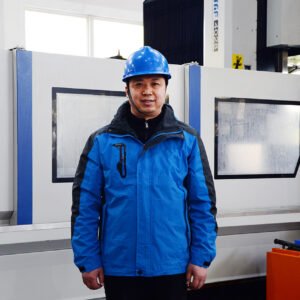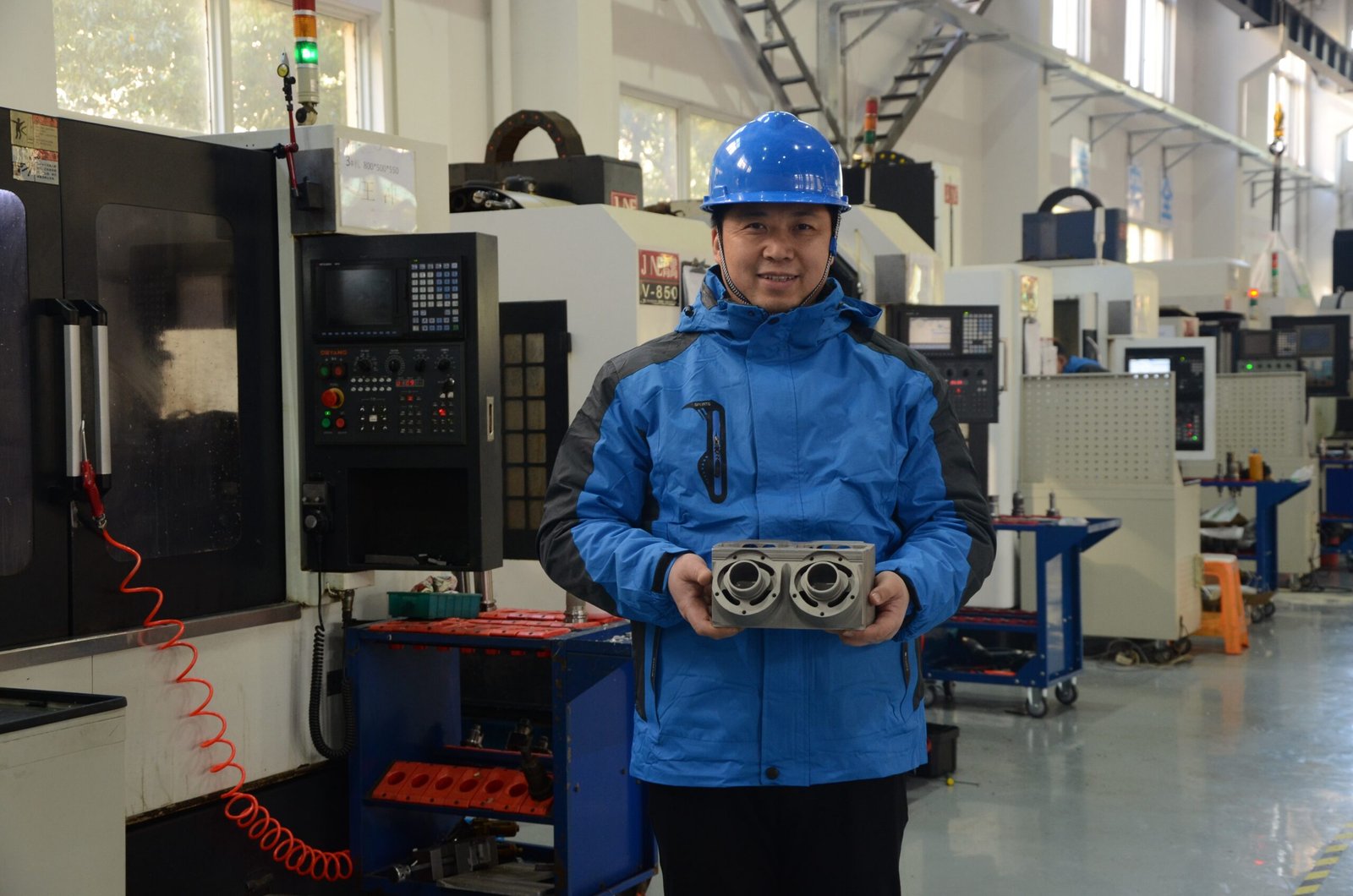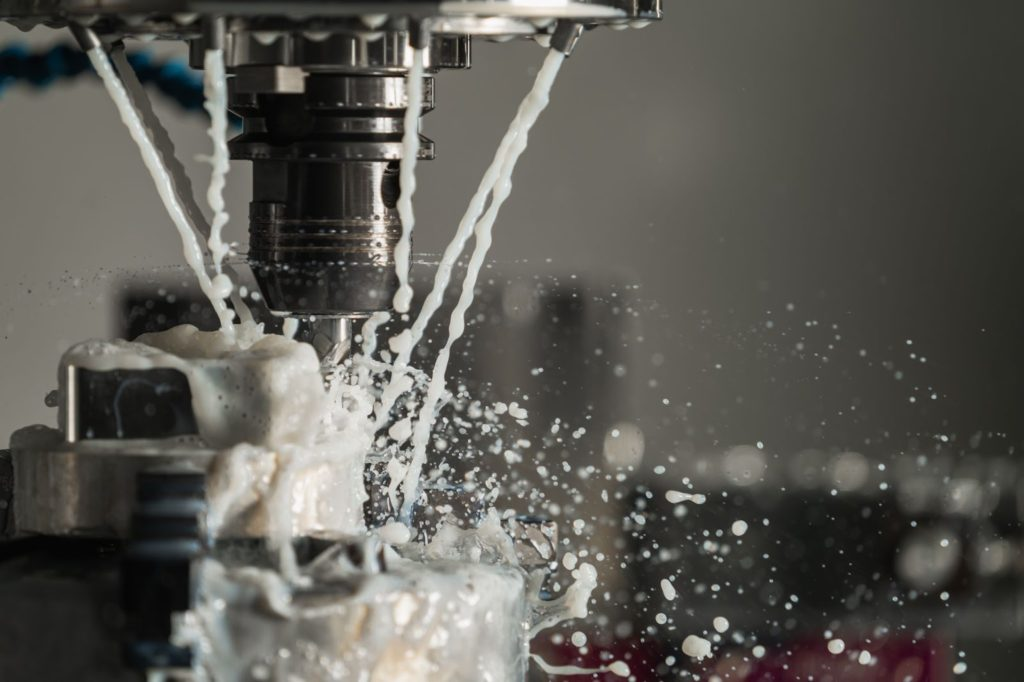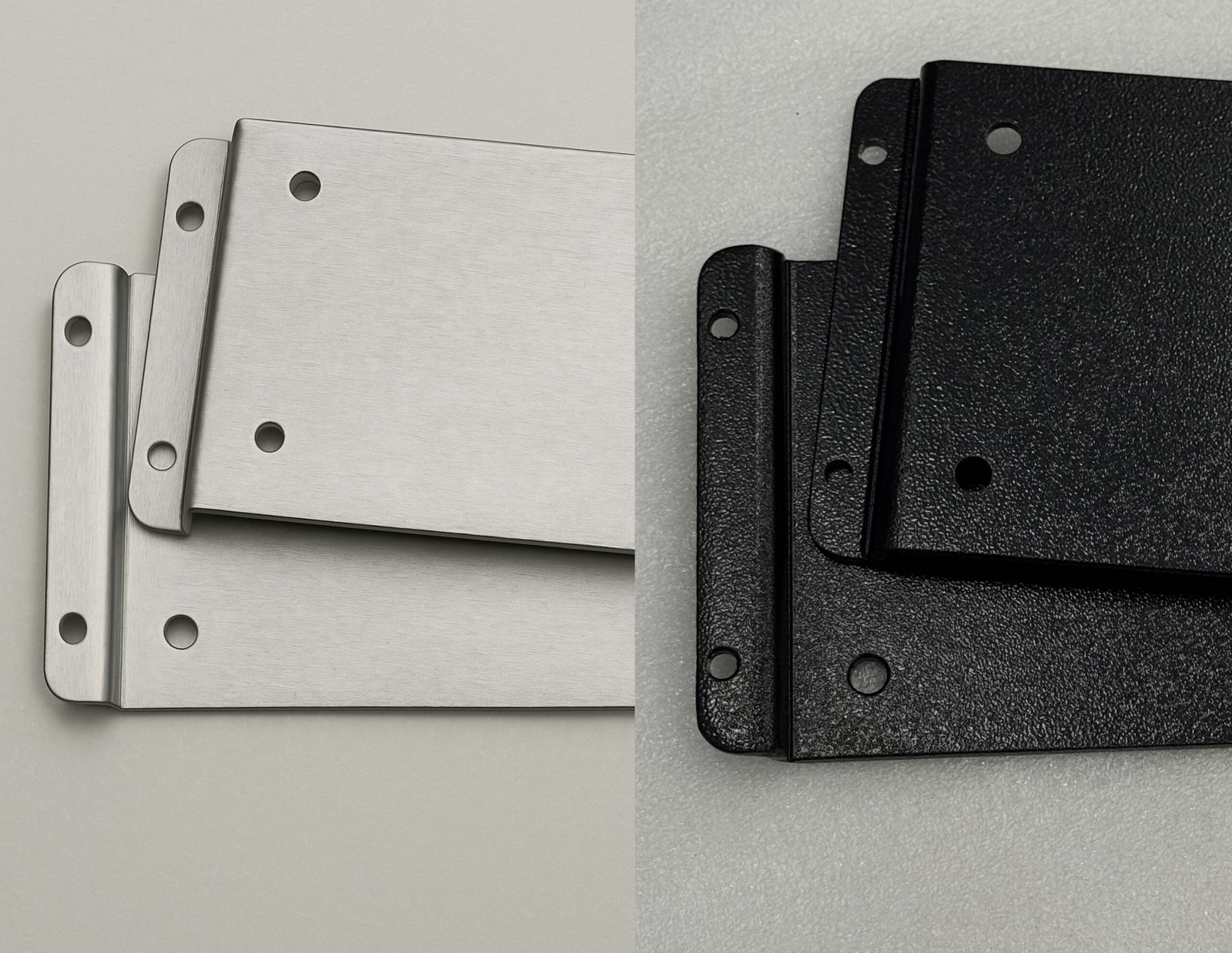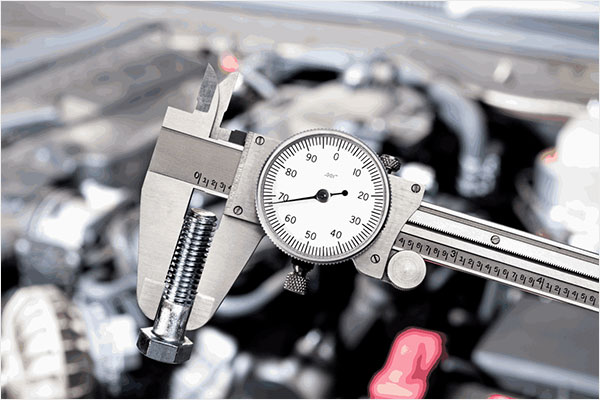
What is Polishing?
Polishing is an operation that creates a smooth, shiny surface finish by softening the surface layer and smearing through frictional heating. The process is combined with fine-scale abrasive removal to improve the appearance and function of the material. Polished appearance is a result of a smearing effect in the process. Polishing is performed with fabric, leather, or felt disks and belts that have fine powders like aluminum oxide or diamond applied to them, offering precise surface refinement for various industrial applications.
Polishing Process Flow
Polishing is a methodical process of transforming raw material into smooth, quality surfaces. The procedure is well sequenced to deliver the best results. Hereafter is a concise description of the process flow:
Surface Preparation
This preliminary significant step is employed to assess the integrity of the material for the selection of a proper abrasive. Proper preparation removes important blemishes and serves as a basis for the remainder of the stages. Skipping this step translates into inefficiency and rubbish finishes.
Roughing
Roughing with coarse abrasives (60–80 grit) eliminates deep scratches, pits, and irregularities. It leaves a flat surface for smoother transitions to higher polishing. Without roughing, defects will be visible in the final product.
Intermediate Polishing
Higher abrasives (120–240 grit) further smooth the surface, eliminating imperfections from roughing. This process bridges the gap between coarse material removal and final refinement, readying the surface for high-grit treatments.
Fine Polishing
320–400+ grit abrasives accomplish near-final smoothing, working for small imperfections. A semi-mirror finish is typical in this process, which prepares the surface for buffing. Consistency at this stage matters in minimizing corrections after polishing.
Buffing
High-speed wheels and compounds complete the surface in two movements: cut motion (against wheel rotation, medium-hard pressure) for even semi-brightness, and color motion (with wheel rotation, light pressure) for brightness. Completing both ensures smoothness and beauty.
Brightening
The final step provides an enhancement to reflectivity through specialized techniques. Light pressure and precise strokes maximize gloss, which is necessary where appearance is crucial. This step takes the surface to a mirror finish.
Protection
Kerosene or wax is used as a lubricant to cool the surface and reduce heat from friction. This helps to protect the finish from damage or becoming rough, enhancing durability and maintaining the polished appearance.
Polishing Methods
Mechanical polishing
Mechanical polishing is abrasion with the aid of abrasives such as sandpaper or polishing wheels, applied to remove surface imperfections systematically. The process usually starts with coarse abrasives to remove prominent scratches, burrs, and tool marks. Finer abrasives are successively applied to polish the surface until the final step where a mirror finish is obtained. The strength of this method is that it can give a very high degree of control over the surface finish, which makes it especially suited to metal surfaces requiring an immaculate, reflective finish. This method is typically time-consuming and labor-intensive, with heat generation that would distort the workpiece if not well controlled.
Chemical polishing
Chemical polishing, however, is accomplished through immersing the work in a chemical bath that has been specially designed to dissolve the peak and valley forms on the surface selectively. It creates an equal finish without needing direct mechanical contact. It works particularly well on materials that cannot be polished mechanically or where accuracy is very critical. The uniformity generated by chemical polishing also aids in improved corrosion resistance. However, the process must be treated with caution due to the hazardous nature of the chemicals involved and offers less direct control over the process than mechanical processes, making it necessary to closely monitor and control the process.
Electrolytic polishing

Electrolytic polishing, or electropolishing as it is generally referred to, is a technique that combines the principles of both chemical action and an electric current. After thorough cleaning of the metal surface, the work is immersed in an acid electrolyte bath. When an electrical current is applied, the process continues to selectively remove the surface irregularities by dissolving the high spots of the metal and produces a very smooth and reflective surface. It is widely applied in applications where surface cleanliness and precision are of the highest significance, e.g., medical, aerospace, and food processing applications. Although electrolytic polishing enhances corrosion resistance and can handle complicated shapes, it does need specialized equipment and strict safety measures since it deals with hazardous chemicals, and its overall cost can be higher than some mechanical methods.
Vibratory polishing

vibratory tumbler polisher
Vibratory polishing is also renowned for its success in processing high numbers of small- or medium-sized parts. For this operation, parts and abrasive media are filled into a vibrating container, and the repetitive motion makes the media rub against the surfaces. Through this repetitive contact, deburring, cleaning, and polishing of the parts take place while imparting a uniform finish to every item. The operation is under precise control so that the precise finish level desired is achieved; when the appropriate polish is achieved, the pieces are taken from the media and washed clean. One of the major advantages of vibratory polishing is that it can be mechanized and thus delivers uniform results at reduced labor costs. However, its use is generally limited to small parts, and with some types, several passes may need to be made before an acceptable finish is achieved. In addition, this method does not deliver the precision necessary to create specialized surface patterns.
Buffing
Buffing is employed when a mirror-like, high-gloss appearance is needed. The operation typically follows a mechanical polishing process and consists of employing a buffing wheel of soft cloth and a chosen buffing compound. The operation is broken down into stages. The initial "cut buffing" stage employs medium to high pressure to eliminate minor surface imperfections, resulting in a semi-bright finish. Then, "color buffing" uses lighter pressure and a finer compound to impart luster and produce a reflective mirror finish. A final finishing pass leaves the surface entirely scratch-free and blemish-free. Buffing is effective with an excellent range of materials, metals, and plastics, and leaves the surface with genuinely excellent reflective qualities. While having its merits, buffing is time-consuming and multi-step. Also, it is not ideally suited to remove deeper scratches, and buffing compound application can contribute to additional cleanup requirements.
Lapping

Lapping entails an exact, controlled abrasion process by means of which work rubs against a special plate, an abrasive slurry being an intermediary. Lapping proves very effective in generating ultra-flat surfaces along with minimum roughness, thus rendering it very essential in semiconductor fabrication as well as aerospace engineering. The operation commences with the extensive cleaning of the work, so nothing comes in the way of the final result. Next, an abrasive composition—generally an amalgamation of finely dispersed particles suspended by means of carrier fluid—is smoothly laid down over the lapping plate. The work is slowly pushed through an eight- or circular figure, so the abrasive successively shapes the surface. An inspection, typically measuring quantities such as the roughness average (Ra), decides whether the accuracy has been achieved. Although very smooth, well-held dimensional specifications result from lapping, it entails specialized equipment as well as very experienced operation. In addition, the method's very slowness constrains it somewhat in the case of bulk fabrication.
Barrel polishing
Barrel polishing, also known as tumbling, employs a kinetic method. In this work, workpieces are immersed in a rotating barrel alongside abrasive media—plastic or ceramic pellets. Rotating, the media rubs over workpieces continuously, essentially removing burrs, flattens out the surface, and scrubs away residue like oils and dirt. It proves very helpful in deburring, as well as preparing, parts for subsequent finishing processes like coating or electroplating. Barrel polishing proves best suited when there are enormous numbers of very tiny pieces, due to automation makes it possible, alongside the ability it has toward labour cost minimization. But due to aggressive operation, it proves less advisable for larger, complex pieces, while the finish it achieves proves less precise than that achieved by lapping.
Abrasive Flow Polishing
Abrasive Flow Polishing utilizes a semi-solid medium of viscoelastic polymers and abrasives, under pressure and pumped through internal part channels or across the exterior. This regulated flow wears away nanometer layers of material, smoothing surface texture and eliminating defects. AFP is especially suited to aerospace, automotive, and medical device production processes where internal passages or complex geometries require perfect finishes.
The process is especially useful for completing inaccessible interior surfaces, radiusing sharp edges to minimize stress concentrations, and removing contaminants by deburring. Its capability for polishing intricate paths uniformly—fuel injector nozzles or turbine blades, for example—is a necessity for components where uniform surface integrity is a necessity. Yet AFP's dependence on sophisticated equipment and abrasive media can be expensive, and the softer or more brittle material may be compromised by the process. Also, obtaining the intended finish may involve several cycles, which could increase production timelines.
Ultrasonic Polishing
Ultrasonic Polishing uses high-frequency vibrations (18,000–50,000 Hz) from a soft tool, e.g., brass or wood, coated with an abrasive paste. High-frequency oscillation enables precise removal of material at the microscopic scale and is suited for delicate molds, medical implants, or pieces with fine features. The method does not exert much mechanical stress on the workpiece, and hence, there is little damage to delicate features.
Operations such as mold-making and medical instrument manufacturing take advantage of its ability to polish into tight spaces, like deep cavities or texturing, without compromising dimension accuracy. The accuracy of the technology is unparalleled for applications such as finishing injection molds or processing surgical instruments, where very smooth surfaces are required. Its low material removal rate renders it too expensive for bulk processing or repair of gross surface flaws, however. The operation cost is also increased by the necessity for specialized operators and ultrasonic generators.
Flame Polishing

Flame polishing employs a hot flame—most commonly from a hydrogen-oxygen torch—to warm the surface layer of thermoplastics such as acrylic or polycarbonate. When the material melts for a short time, surface defects such as scratches or micro-cracks are eliminated, leaving it with a clear, shiny appearance upon cooling. Flame polishing is commonly applied in polishing acrylic displays, signs, or optical elements where transparency is a necessity.
It's a fast, abrasive-free process and therefore suited to edge polishing or surfacing preparation for bonding. It only works on certain plastics, however, since metal or ceramics won't be able to accept heat treatment. There are overheating risks—warping or bubbling—that have to be regulated carefully, and the operator should be able to endure heat exposure for consistent outcomes. Nonwithstanding these restrictions, flame polishing still is a first-line method of achieving optical-quality surfaces on thermoplastic products.
Mirror Polishing
Mirror polishing yields an extremely reflective, high polish on metals, essential for investment castings of high quality used in marine, aviation, architectural, and automotive applications. Either mechanical or chemical processes may be employed to achieve this finish.
Mechanical mirror polishing begins with grinding to remove surface defects. Rough grinding eliminates large irregularities, whereas fine grinding eradicates deeper wear marks. The process then progresses to a polishing phase using a series of dedicated tools. First, a composite louver disc addresses initial surface removal. A synthetic grinding disc next fine-tunes the surface even more, and lastly, a wool polishing disc applies paste or wax to provide a perfect, mirror-finish finish. This careful approach achieves a surface roughness less than Ra0.2, suitable for stainless steel and even cast aluminum parts.
Chemical mirror polishing consists of a series of controlled chemical processes. The metal is first degreased and thoroughly cleaned. Oxides and carbonaceous deposits are eliminated with the aid of a pickling agent. The workpiece is then dipped into a specially prepared polishing solution for over 30 minutes. A rinse using pure water and drying completes the cycle.
Choosing the Right Polishing Method
The selection of an appropriate polishing method is paramount if high-quality surface finishes are to be attained, and close examination of a number of key considerations is imperative. Material type is one of the initial considerations; i.e., hardness, chemical composition, and thickness of a workpiece will dictate whether mechanical approaches are needed for hard materials like stainless steel or flame polishing is to be employed with softer plastics. In addition, the final surface quality desired—whether reflecting mirror finish or a specially textured appearance—affects the selection process, so processes like electropolishing are better at corrosion protection and smooth surface finishes, while mechanical polishing is appropriate for high accuracy.
Finally, the complexity of the design of the part must be considered; surfaces that have intricate curves or depth profiles may require ultrasonic or vibratory processes for uniform treatment. Production needs also enter the picture: high-volume production is more likely to prefer faster techniques like barrel polishing, while low-volume, precision work can be addressed by the accuracy of lapping. Last but not least, budget and equipment availability must be factored in, since specialized methods can be very costly. All in all, a combination of these will lead to an effective and efficient polishing strategy. Getting the right choice assures maximum performance and longevity.
Applications of Polishing in Industries
Surface polishing is a requirement in most industries, both from a functional and visual perspective. Chrome and trim polishing in the automotive industry give a mirror finish, while in medicine, smoothness minimizes the risk of contamination. Aerospace components are enhanced with reduced friction and improved durability through precision polishing. Consumer electronics have bright, shiny finishes that contribute to the aesthetic appeal of devices. Metallography depends upon strict polishing in order to reveal flawless metal microstructures, and food processing equipment utilizes polished stainless steel for higher hygiene and corrosion resistance. Jewelry becomes more luminous with proficient polishing, and industrial piping maintains integrity while withstanding corrosion. These sophisticated forms of polishing markedly improve safety, efficiency, and longevity, driving better industry-wide performance.

